A handshake is often one of the first make-or-break moments of nailing a first impression. If done correctly, your handshake partner may even view you as more likable.
But done wrong, you can ruin a first impression forever. Want to know what goes into making the perfect handshake? In this guide, you will learn:
- the dos and don’ts of a great handshake
- how many times to shake a hand after clasping
- what you can tell from someone by their handshake
- how to tell if someone is going for the handshake, bro fist, or hug
- and more!
Check out my video below to learn how to do a perfect handshake:
The Proper Handshake Quick List
Short on time? Here’s exactly what to do to perfect your handshake1:
- If possible, initiate the handshake.
- Keep your body square with them.
- Make strong eye contact and smile.
- Make palm-to-palm contact.
- Match their level of firmness.
- Hold the grip for one second longer than you’re used to.
- Start talking before letting go.
- If you’re going to break eye contact, look to the side. Don’t look down—looking down is a submissive cue.
And above all, make sure to have and hold a great conversation! Having the perfect handshake means little if you can’t talk to someone for more than 5 minutes. And when you’re finished talking, learn how to end a conversation in any situation.
Match Firmness
A person’s handshake can give you insights into their personality. One study by the University of Alabama had 112 male and female college students shake hands with handshake experts. Unknown to the college students, the experts secretly took mental notes depending on the person’s handshake, including:
- strength
- vigor
- duration
- eye contact
- completeness of grip
The results found that yes, you CAN guess a person’s personality based on their handshake alone! Here’s what the results found:
- Firm handshakers were more extroverted, open to experience, less neurotic, and less shy than those with a less firm or limp handshake.
- Women with firmer handshakes were found to be more liberal, intellectual, and open to new experiences. They also made a more favorable impression.
So what does this tell us?
Firm handshakes are winners all around. Sure, men who had a less firm handshake were found to be more open, but they made a poorer first impression overall.
Firm handshakes are a win-win, especially in business situations.
Pro Tip: Don’t be too firm… or you might end up like the unfortunate fellas in the movie Hot Shot. If you struggle to gauge if your handshake provides the right level of firmness, practice on a few honest friends and ask them how they feel when they shake your hand.
DO Make Direct Eye Contact
Though this isn’t directly part of the handshake, it has a huge impact on its success. Adding eye contact triggers the release of oxytocin with both the contact and mutual gazing. When you make eye contact with someone, you’re literally saying “I want to connect with you.”
Doing this in the first few moments of meeting someone is more important than anything you could ever say in your elevator pitch. It may sound extreme, but when people don’t make eye contact with us when we first meet them, it’s a red flag for our brain that makes us subconsciously suspect they are hiding something from us.
Research shows that eye contact also makes you more persuasive, memorable, and likable. This is because it increases the activity in the areas of the brain responsible for positive social interactions, strengthening people’s willingness to listen to you and their desire to see you again.
Pro Tip: Make sure the direction of your eye gaze is appropriate for the situation. Psychologists have discovered that when we make eye contact with people, our gaze shifts based upon how we feel about the person. Most people won’t consciously pick up on how you gaze at them. However, it does play a subconscious role in how people feel when you make eye contact.
DO Keep Your Hands Vertical
Both of your hands should remain straight and vertical throughout the handshake. This puts you and the other person in equal positions of power. If someone flips your hand upward so your inner wrist is exposed, it is a sign they are exerting their dominance over you by putting your hand in a weaker position than theirs.
If you are flipped up, make a mental note that the other person is trying to show that they are in charge. Similarly, try not to offer your hand with your wrist facing upward because it shows that you feel you are weak.
Pro Tip: On the other hand, if you missed a deadline or want to show sympathy to your boss, try giving a handshake with your palm up. This gives them a feeling of power and shows your humility.
DON’T Overpower
In Roman times, 2 leaders would casually meet, greet, and then proceed to furiously arm wrestle while standing.
The stronger leader would finish with his hand above the other’s hand. This became known as the upper hand position2. Funnily enough, you can still see this position all over the world, especially from politicians.
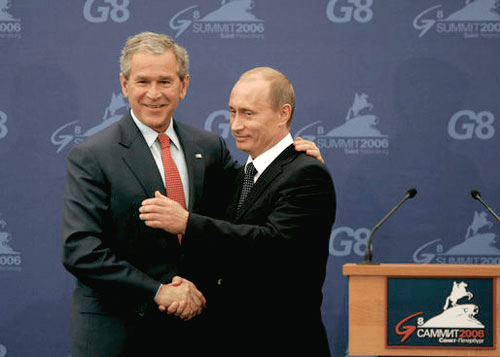
Getting the upper hand might seem dominant, but avoid doing this if you actually want to be likable and not tick other people off.
DO Choose Your Target
Imagine you’ve just arrived at a business event. Who do you shake hands with first? Is it:
- your coworker
- the secretary
- the boss
- your dog
This one might seem obvious, but it’s the boss! In group business situations, it is more polite to shake hands with the superiors first, followed by the employees or your coworkers.
Make that decision quick, or you might end up shaking 2 hands at once!
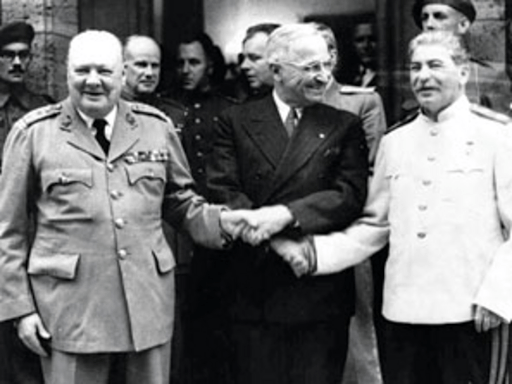
In a job interview, you should let the interviewer offer their hand first. Or, if you’re in a meeting with a potential client, you might want to offer a handshake first to take the lead.
In a study of 350 successful senior management executives (89% of whom were men), almost all managers initiated the handshake2. On top of that, 88% of men and only 31% of women used the dominant handshake position.
If you’re in a group of VIPs, try to identify the most senior or reputable person in the group before shaking everyone’s hand.
DON’T Shake Too Close
Shaking hands too close might invade someone’s personal space. Even worse is if you grab a person’s hand and hold their hand close to their body. This might be an unwanted power move and lead to bad feelings.
DO Give Some Space

Everybody shakes hands differently, so it’s best to give appropriate space before barging in. So how do you find that space?
Try the “Shake and Wait” approach to find the most comfortable distance with your partner3. When first meeting someone, lean in, give your handshake, and then take a step back. One of three things will happen:
- They will remain in place. This means he/she is comfortable at that distance.
- They might take a step back or even turn slightly away. This means they need more space or want to be somewhere else.
- They’ll take a step closer. This means they feel comfortable or might even like you.
Use this approach to judge your interaction and how good of a first impression you’ve made.
DON’T Turn Away
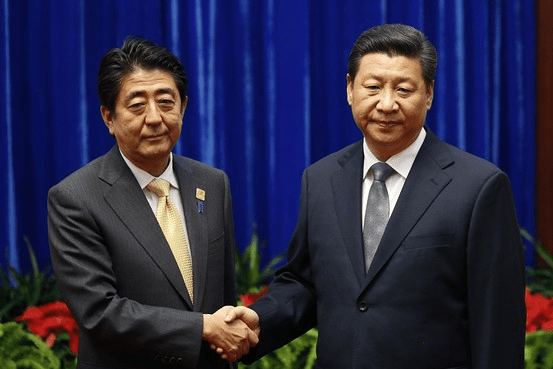
Holy smokes, could they look any more excited? When shaking hands with someone, make strong eye contact and pay attention.
Facing them says “You’re important.” Facing away says “Let me outta here!” Give them the time they need for these brief seconds. Nothing is worse than a hurried handshake that’s done out of politeness.
DO Lean In
Slo-mo analysis shows that there is a noticeable lean forward any time a handshake occurs4. These are small, telltale intention movements of embracing, similar to how a hug would occur.
In other words, handshakes are deeply personal, similar to a hug.
And want to know who’s an expert handshaker?
Why, the Queen of England, of course! Look at that excellent lean forward. That marvelous eye contact. And that genuine smile of happiness.
Now I wouldn’t recommend leaning so far that you end up bowing like the guy on the left, but if you’re shaking hands with royalty, you might want to make an exception.
DON’T Finger Grab
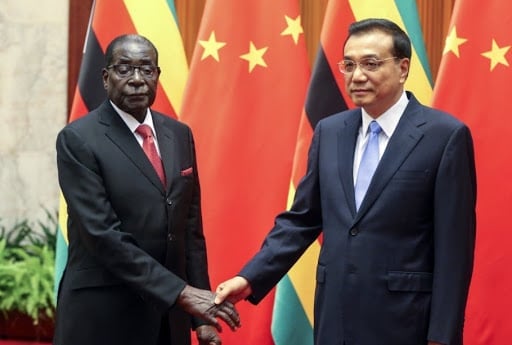
This picture speaks for itself and nonverbally says “Yikes!”
When shaking hands, make sure to make contact with the fleshy part of your hand so you can get full contact.
DON’T Go For The Double Hand… unless you’re a politician
You know that double handshake that politicians often do?
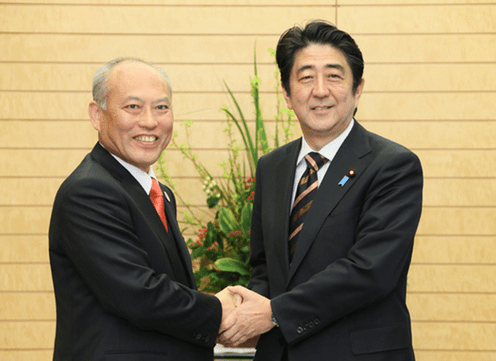
This type of handshake is often used to overpower someone and show them you’re the boss. It’s a nonverbal way of saying “I own you” and something I definitely don’t recommend doing.
On the other hand, you might hug the other person’s hand with your free one, but this is usually reserved for loved ones.
DON’T Give the Limp Fish
You know that cold, soft handshake that feels kind of lifeless and like you’re grabbing a dead fish?
Stay away from doing that.
Studies show that a limp handshake actually makes people want to cooperate with you less. This can be a huge deal breaker in job interviews. Interestingly, you might notice that artists, surgeons, or musicians shake like this to protect their hands2.
Bonus: DO Stay Dry
Are you a sufferer of excessively sweaty hands?
Embarrassing note: Sometimes I am.
When we’re nervous, blood diverts away from the hands and into the arms and legs to prep for fight or flight. As a result, our hands lose temperature and start sweating2. So it’s perfectly normal!
Luckily, you can do some things to minimize the moisture:
- In many settings, it is acceptable to carry handkerchiefs in your pocket. If you’re prone to sweaty palms, wipe your hands on the handkerchief to get rid of any sweat.
- Another tip is to get a glass of water, wine, or another cold beverage and wrap it with a napkin. This allows you to dry your hand on it while carrying your drink.
- Visualize holding your palms in front of an open fire. This raises the temperature of the average person’s palms by 3–4 degrees2.
If you are unable to hold anything, keep your hand at your side while you approach people so you can rub it against your pants as you lift it to shake hands.
How Many Times Should I Pump?
Another aspect of handshakes that confuses people is how long they should last. Typically, handshakes have one to three pumps. This depends upon how much time you have. If you’re in a rush, one is good, but feel free to go up to three if you’re beginning what will be a longer interaction.
If someone goes over three and is holding your hand for too long, you can counteract it by using your other hand to tap theirs. The additional contact is a cue for them to release.
Pro Tip: Be careful of overpumping or overdoing it. You don’t want to end up having a more… complicated handshake than necessary.
What to Do Instead of a Handshake
The most important thing if you want to nonawkwardly avoid a handshake is to show someone your intention BEFORE they initiate the handshake (that’s where it gets awkward).
- You could shout, “Don’t touch me!” at someone as they approach.
- You could hold your hands behind your back and slowly back away.
- But it’s better to try one of the steps above and say something like, “Let’s be germ-free, friend!”
Watch our video below to learn what to do instead of a handshake:
The best way to politely decline a handshake is to preempt it with something else, like a footshake, fist bump, smile and wave, or nod.
Whether you are avoiding germs or too much touch, I’m going to give you some options for avoiding the handshake.
As long as you make someone feel acknowledged, you can nicely avoid a handshake.
But is it okay not to shake hands?
While handshakes are wonderful for rapport building, there are certain situations where it is okay to avoid a handshake, like an epidemic, if you dislike touching, or in a location where a cold or flu is going around.
Here are your options for politely and nonawkwardly avoiding a handshake:
The Nod
The best way to avoid a handshake is to help someone feel acknowledged BEFORE they go in for the shake. When someone is approaching you and at least three feet away, give them the nod:
This shows them you have already acknowledged them and are less likely to reach out for a handshake.
The Smile & Wave
Another great option is giving someone a big smile and a generous wave. This shows them you are happy to see them and they are being acknowledged (but hopefully won’t go in for the handshake).
Add a small eyebrow raise for a little extra charisma.
The Footshake
What is a footshake? It is a simple way of greeting that replaces a handshake by tapping your foot with another person’s foot.
This one is pretty creative if you can get someone on board. It’s a simple foot kick:
With this one, you might have to give a little explanation—but once someone is on board, it is a great way to get some laughs and a little exercise too. 😉 Say something like…
“Let’s avoid the germs and do the kick greet. Here, tap my foot!”
It might honestly replace the handshake one day.
The Fist Bump
This one is my least favorite because it could still potentially spread germs (or involves touch, if you are not into touch). But it can work. The key here is to make the fist while at least 3 to 5 feet away.
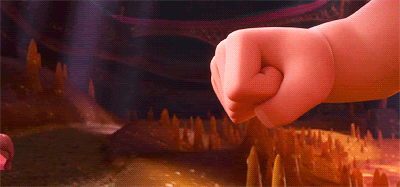
Be super-duper clear you want a fist bump. Just hold it up and wait.
Bonus: Air Hug
I’m a big fan of air hugs.
Sometimes if I see someone coming at me with those big open arms (and a runny nose), I take a step back and yell:
“Air hug!”
And then we give each other imaginary hugs from five feet away… and giggle because it’s silly but still feels nice.
Handshake, Fist Bump, or a Hug?
You know that awkward moment when someone is coming to greet you with some kind of professional touch and you have no idea if they are going for the handshake or the hug?
So you’re left kind of putting your hand out but also not sure if you should open your arms for the hug, or you just wait for them to approach and do nothing at all?
Then you fumble through your verbal greeting and are left struggling to take down your social anxiety so you can carry out your interaction with them.
When writing my book Captivate, I sought to discover how to deal with social issues like this that plague our everyday lives. Here’s my solution for navigating greetings so you’re never left wondering how to greet someone again.
Handshake or hug? Watch our video below to learn how to handle awkward moments:
The key to doing greetings that set you up for great interactions is to be comfortable with the option you use. That way you get off to a smooth start that sets the tone for the rest of your time with the person you’re meeting.
If you aren’t sure what type of greeting you should use, choose the one that you feel is most appropriate for the situation.
In my best-selling book, Captivate, I explain how touch plays a role in different social environments. Armed with that information, you can strategically decide how to greet people based on the impression you want to make.
The Handshake
When someone wants to greet you with a hand, they will angle one shoulder toward you and put out a single arm once they get close. This is your cue to reciprocate by doing the same.
Keep in mind that a handshake tells you more than you may realize. By getting the handshake right, you can show that you’re emotionally stable, agreeable, and respect the person you’re meeting. Some people will put their palm out when meeting others, which shows that they are submissive. If you want to demonstrate that you’re equal to the person you’re meeting, do a vertical handshaking motion. If you want to communicate that you’re confident, make sure your hands are dry. Sweaty palms are an indicator of nervousness.
The level of firmness in your handshake is crucial; if you have a “dead fish” shake, it’s going to show that you’re weak, while a “death grip” will turn people off. Practice your handshake on a friend or family member to ensure that you’re hitting that firmness sweet spot.
The Fist Bump
The bro fist is a common greeting used among young men where the knuckles of each person lightly bump together. There may also be dramatic fist motions at the end of the bump, signaling a secret way of greeting.
Fist bumps are undoubtedly the hardest to distinguish between. Handshakes and fist bumps start off similar—there’s the eye contact, the extending hand, the forward lean, and STILL… there’s no guarantee for victory.
Keep in mind these quick tips to distinguish between the 2:
- Fist bumps should be used in informal situations when laughing about a joke or for subtle “You got this!” moments.
- Handshakes, on the other hand, should be solely used during formal events like business interviews.
The Hug
People who are natural huggers and/or who feel friendly toward you will often prefer to greet you with a hug instead of a handshake. When someone wants to hug, they will approach you with their arms open and their torso facing you in preparation for the embrace.
To avoid awkward hugging, you need to be prepared to go all in. If you’re uncomfortable with it, you’ll end up giving the other person a half hug, one of those weird hugs where you embrace with your arms but your chests don’t touch, or some other variation that is worse than not reciprocating the hug at all.
The Cheek Kiss
While not as common in North America, in many European and South American cultures, people prefer to greet one another with kisses on both cheeks. This is one of the most intimate forms of greeting between acquaintances and, if you’re not familiar with it, it goes something like this:
Someone will greet you face first, angle their head out toward you on the approach, put one or both hands out so they can grasp your arms and embrace you when they go in for the cheek kiss. During the embrace, there will often be a moment or two of close talking.
Compared to a handshake especially, this type of greeting is powerful in personal relationships because it strengthens the bond between two people. Whenever two people touch, oxytocin, the bonding hormone, is released so that both individuals feel closer to one another. The more places and the longer you touch, the greater the amount of oxytocin that is released, which is why this type of greeting feels very intimate.
What Do You Do if You Don’t Want to Touch?
Whether because of your cultural background or your personal preference, you may not feel comfortable touching people you aren’t close to, and that’s perfectly okay. The key to controlling the type of contact you have with people is sending the right signals.
If you prefer handshakes over hugs and cheek kisses, you can put one arm out toward people as you approach them. Or, if you would rather not make contact at all, raise your arm up and wave when someone approaches you. Soften the signal of not greeting them with the expected handshake or hug by warmly saying that you are excited to see them.
How should a woman shake hands with a man?
If you’re a woman and you’re about to shake hands with a man, you might want to offer your hand first. This breaks down the social etiquette barriers. If a man offers a handshake first, it might be intimidating for the woman.
Some women might even give a soft handshake in some social contexts to imply submissiveness and highlight their femininity or imply that they can be dominated. In business situations, this is not a good idea because men might not take her seriously. However, it all depends on context, so judge your situation carefully.
How Politicians Get The Upper Hand
Watch how 3 country leaders strategically handshake to try to be in the dominant position:
Russian President Vladimir Putin waits to meet the other leaders. He strategically places himself so he’ll always have the “upper hand” when he shakes hands with the other leaders. Here’s what happens:
- First up is Japanese prime minister Junichiro Koizumi. Putin manages to get the upper hand by having his arm out, covering Koizumi from the camera’s view as well as having his hand in the dominant position. +1 for Putin.
- Next up is British prime minister Tony Blair. Blair knows what’s going on and doesn’t want to be outdone, so he shakes hands with Putin and then puts his other hand on Putin’s elbow. This is a high-power handshake move and signifies that Blair’s actually the boss.
- OK, so we have a tie now. The last and final person to enter is US president George W. Bush. Bush is also aware of Putin’s power game and wants to win. So what he does here is get so close to Putin that his shoulder is blocking Putin’s left arm, preventing Putin from being able to do the 2-hand handshake like Blair did to Putin.
- Finally, Bush turns and gives Putin a couple taps on the shoulder. Putin then taps Bush on the arm in return, since he doesn’t want to be outdone.
Phew! Talk about a power struggle.
As you can see, handshaking is simple on the surface but has many elements of power, rapport, and relationship building underneath. Now I’ll leave my more awkward handshake stories for another day…
Sources:
1 Goman, C. K. (2011). The silent language of leaders: How body language can help or hurt how you lead. San Francisco, CA: Jossey-Bass. 2 Pease, A. (2017). The definitive book of body language: How to read others’ attitudes by their gestures. London: Orion. 3 Navarro, J., & Karlins, M. (2015). What every BODY is saying: An ex-FBI agent’s guide to speed-reading people. New York, NY: Harper Collins. 4 Morris, D. (2012). Peoplewatching: The Desmond Morris Guide to Body Language. London: Vintage Digital.
Side Note: As much as possible we tried to use academic research or expert opinion for this master body language guide. Occasionally, when we could not find research we include anecdotes that are helpful. As more research comes out on nonverbal behavior we will be sure to add it!
